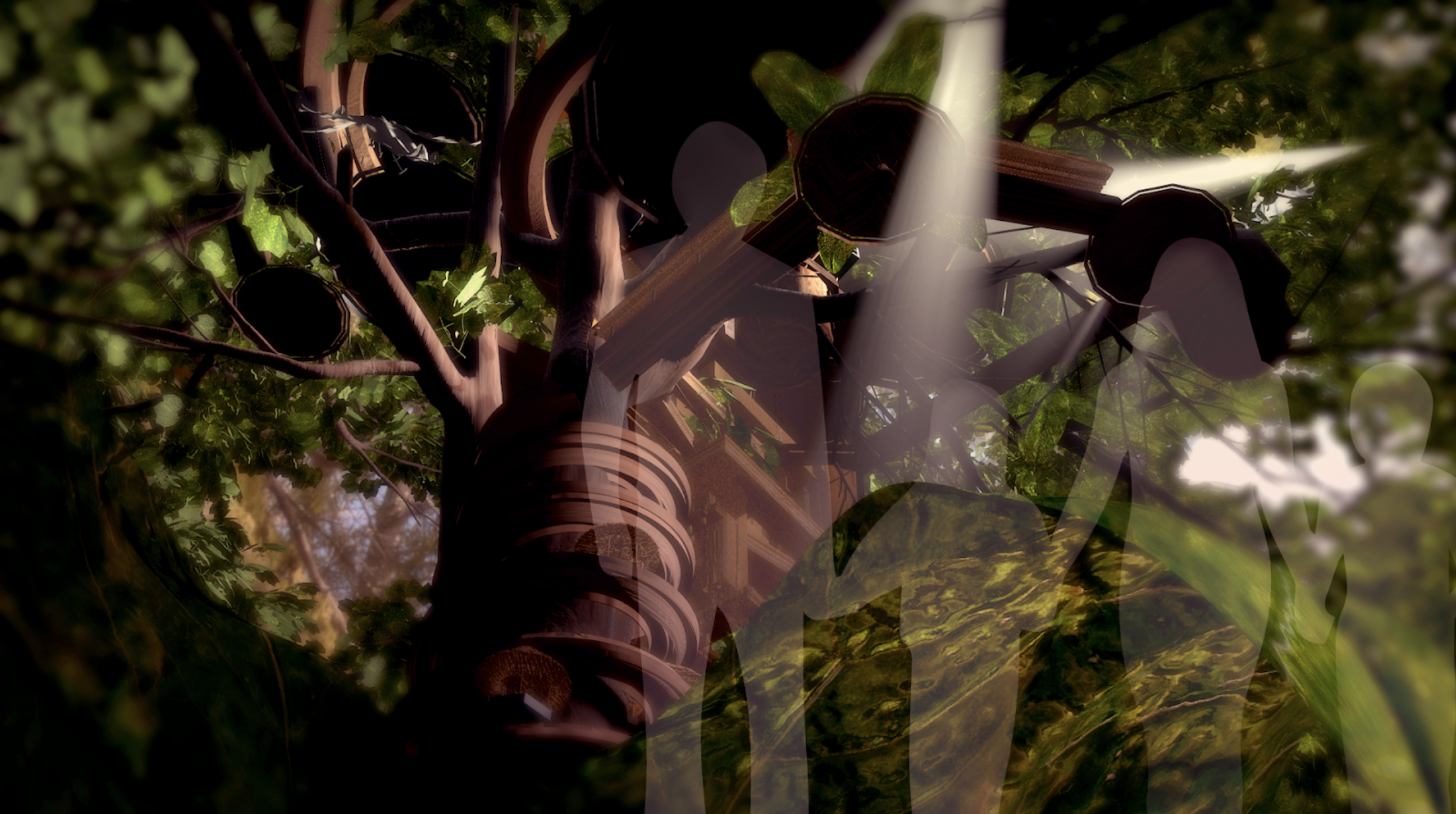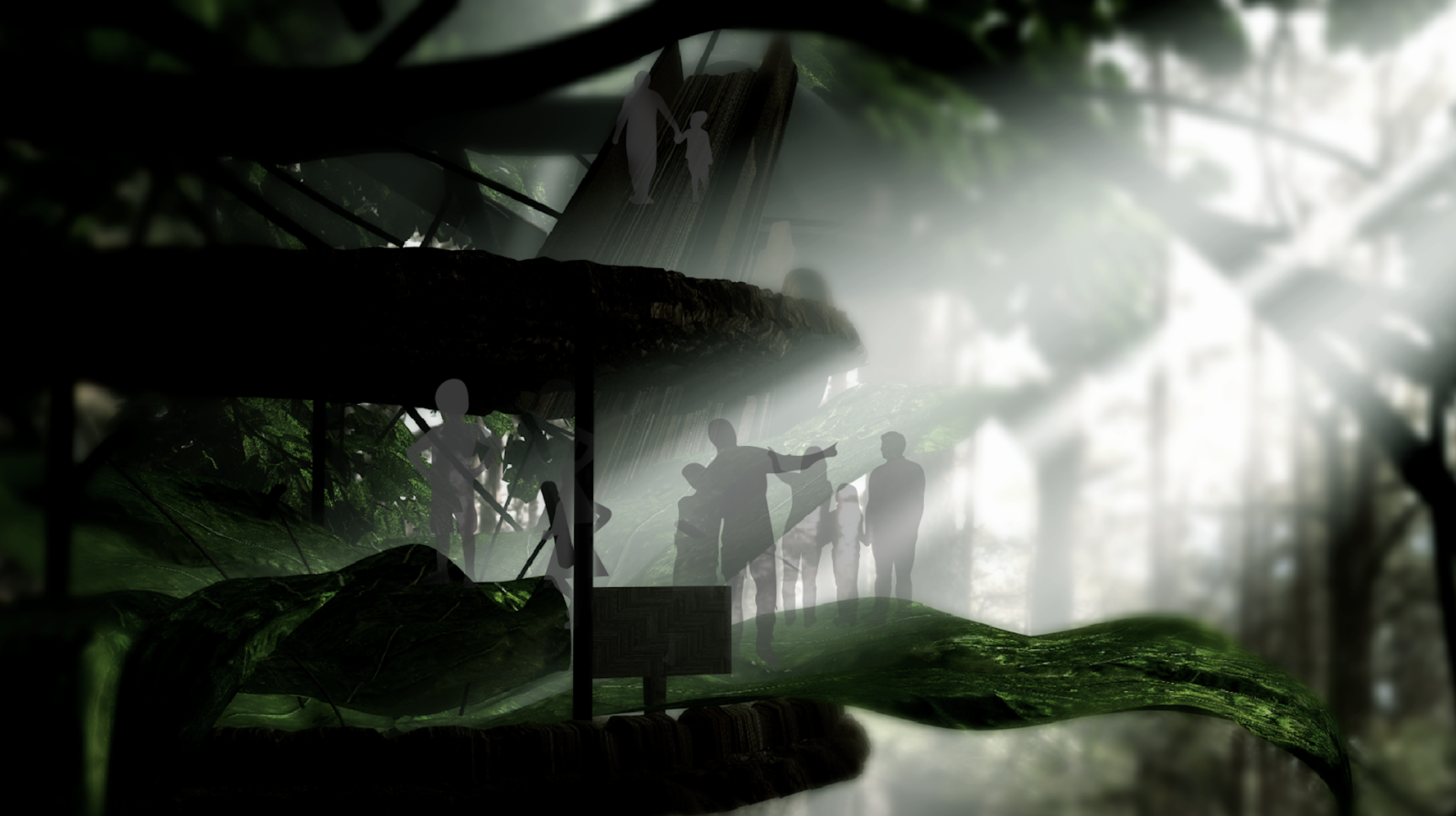The Tree House Project
Kento Shirotsuka (Graphic Design) & Lucas Lenique (Performer/Composer)
Project Description
The Tree House Project is aimed to encourage children to play outside, and get involved in physical activity in nature. A large-scale tree house would be designed and built based on the experience of a keystone species in the local environment, and inspired by Japanese athletic parks where children could complete challenges and advance up the treehouse.
For this version of the project, we focused on immersing the visitor in a beaver environment to understand how this species positively affects local ecosystems, and to prove how as individuals we can have a direct and positive effect on our surroundings. The beaver has disappeared from many of its former habitats, but is key to rehydrating the land and bringing local water cycles back in balance.
Kento Shirotsuka (Graphic Design) & Lucas Lenique (Performer/Composer)
Project Description
The Tree House Project is aimed to encourage children to play outside, and get involved in physical activity in nature. A large-scale tree house would be designed and built based on the experience of a keystone species in the local environment, and inspired by Japanese athletic parks where children could complete challenges and advance up the treehouse.
For this version of the project, we focused on immersing the visitor in a beaver environment to understand how this species positively affects local ecosystems, and to prove how as individuals we can have a direct and positive effect on our surroundings. The beaver has disappeared from many of its former habitats, but is key to rehydrating the land and bringing local water cycles back in balance.
Project renderings



The activities would be made to understand the behavior of a beaver, their environment and their importance in the ecosystem. They would also be fun, challenging physically, in a pyramidal way (the more activities we complete, the more physical and subtle it becomes).
Goals: To create healthy and physical activity for the visitors + make the visitors sensitive to the environment and the part they could play in the balance of the ecosystem, following the lead of a species that plays a major part in theirs.
Core Questions
How can we educate young people about nature so they learn to protect and harness it?
How can we get children (7-15) aged children to play outside and boost creativity?
Context
National Trust research showed that children are playing outside for an average of just over four hours a week. This compares unfavorably with 8.2 hours for their parents when they were children. What’s more, a study by the UK government found that 10% of respondents have not even been in a natural environment such as a park, forest or beach for at least a year.
Furthermore, the physical deterioration of younger children is often seen in this phenomenon due to minimal usage of muscle groups and proper diet.
This project also encourages audiences to focus on smaller details in nature and observe closely to how we interact with natures as humans.
Additional Info
Recent studies have exposed the benefit—even necessity—of spending time outdoors, both for kids and adults. Some argue that it can be any outdoor environment. Some claim it has to be a “green” environment—one with trees and leaves. Others still have shown that just a picture of greenery can benefit mental health. These nuances aside, most of the studies agree that kids who play outside are smarter, happier, more attentive, and less anxious than kids who spend more time indoors. While it’s unclear how exactly the cognitive functioning and mood improvements occur, there are a few things we do know about why nature is good for kids’ minds.
Children are after after all the next generation of humans, and it is crucial to bring their awareness to the importance of their relationship with nature. The planet is dying, and we all need to be aware of the part we can play in order to save it.
Goals: To create healthy and physical activity for the visitors + make the visitors sensitive to the environment and the part they could play in the balance of the ecosystem, following the lead of a species that plays a major part in theirs.
Core Questions
How can we educate young people about nature so they learn to protect and harness it?
How can we get children (7-15) aged children to play outside and boost creativity?
Context
National Trust research showed that children are playing outside for an average of just over four hours a week. This compares unfavorably with 8.2 hours for their parents when they were children. What’s more, a study by the UK government found that 10% of respondents have not even been in a natural environment such as a park, forest or beach for at least a year.
Furthermore, the physical deterioration of younger children is often seen in this phenomenon due to minimal usage of muscle groups and proper diet.
This project also encourages audiences to focus on smaller details in nature and observe closely to how we interact with natures as humans.
Additional Info
Recent studies have exposed the benefit—even necessity—of spending time outdoors, both for kids and adults. Some argue that it can be any outdoor environment. Some claim it has to be a “green” environment—one with trees and leaves. Others still have shown that just a picture of greenery can benefit mental health. These nuances aside, most of the studies agree that kids who play outside are smarter, happier, more attentive, and less anxious than kids who spend more time indoors. While it’s unclear how exactly the cognitive functioning and mood improvements occur, there are a few things we do know about why nature is good for kids’ minds.
Children are after after all the next generation of humans, and it is crucial to bring their awareness to the importance of their relationship with nature. The planet is dying, and we all need to be aware of the part we can play in order to save it.
Sketches


